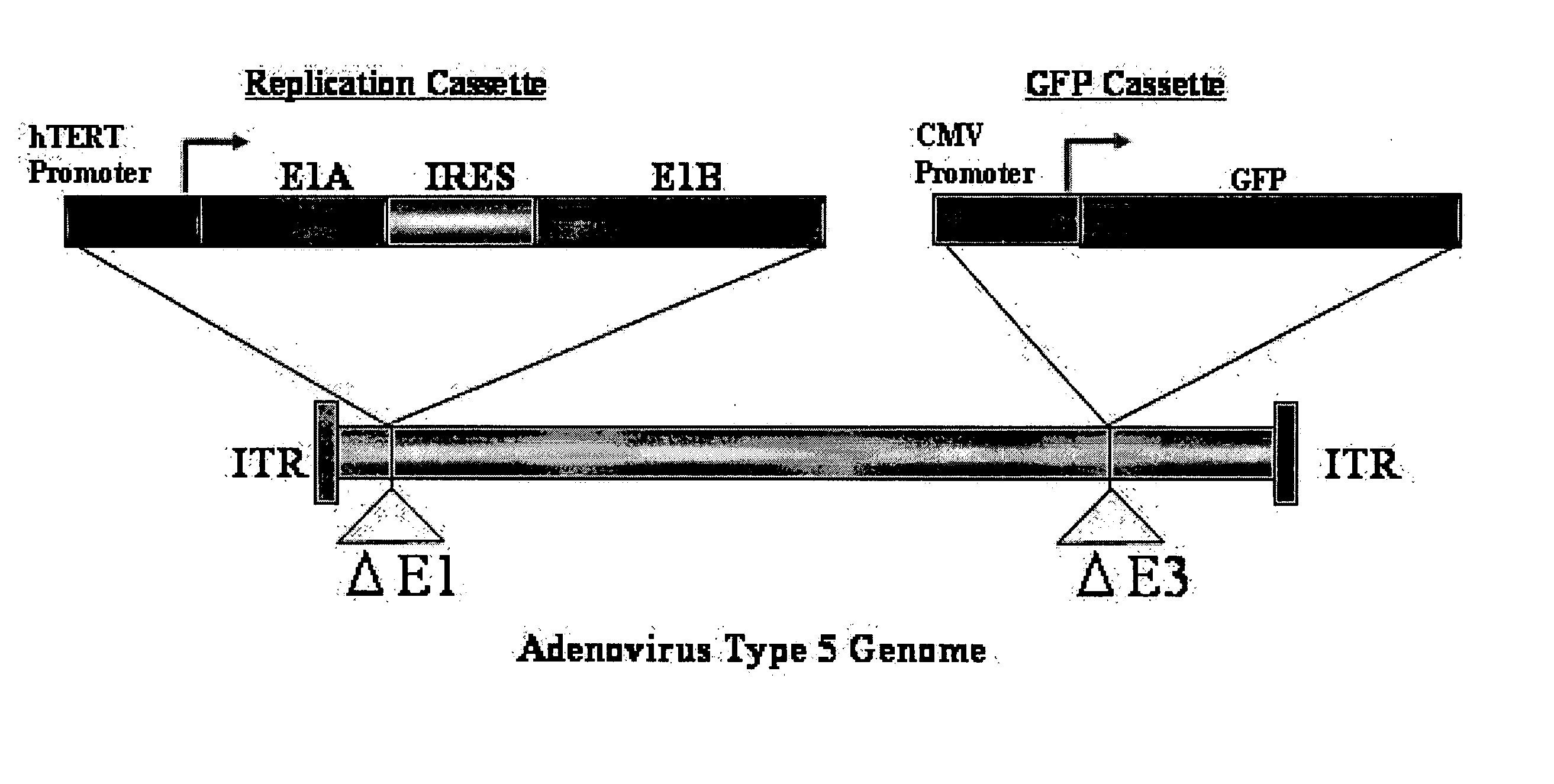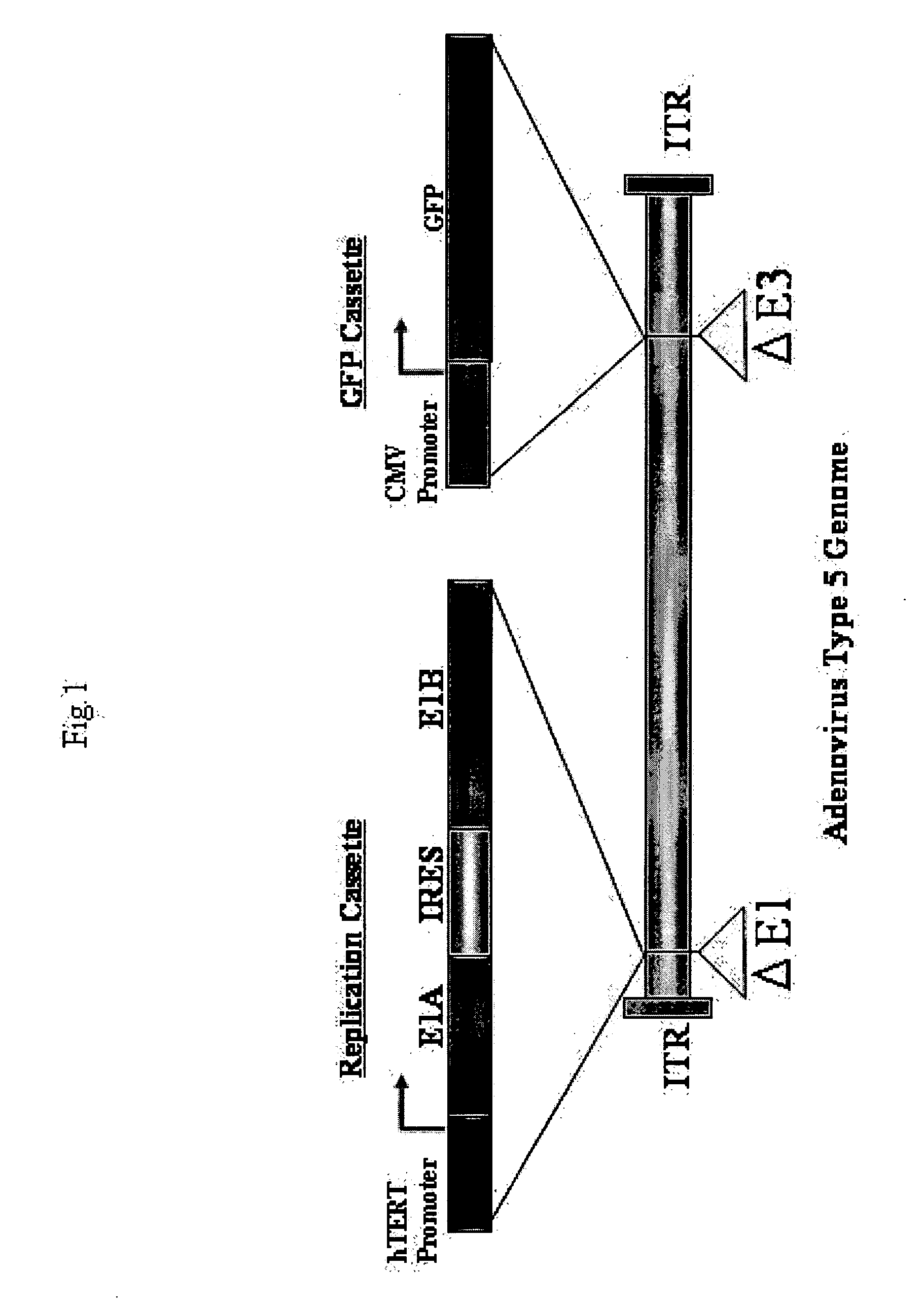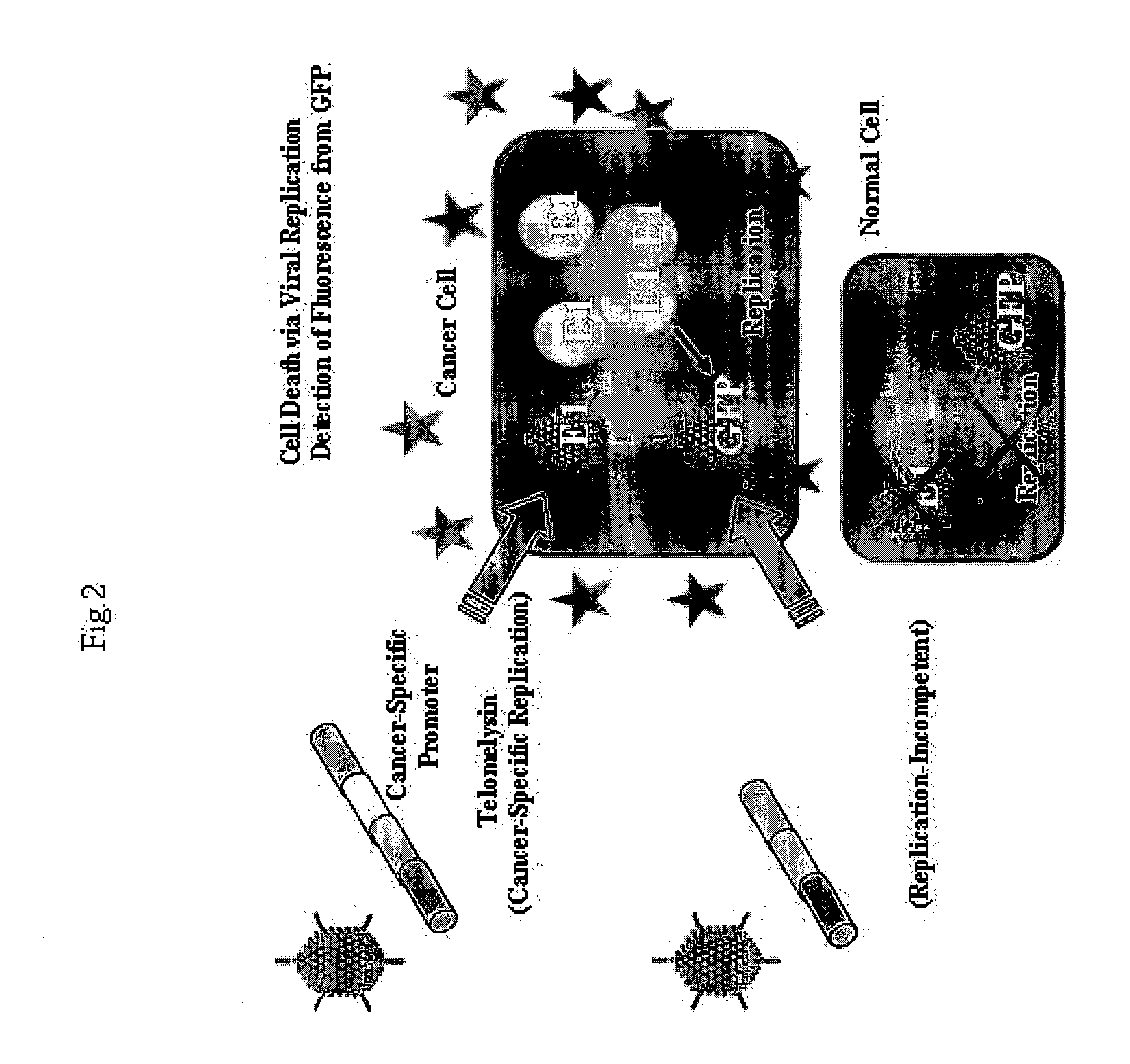Telomelysin/GFP-expressing recombinant virus
a virus and telomelysin technology, applied in the field of telomely, can solve the problems of insufficient development of the infected living body detection system during surgical operation, and no research has been known to date in which the living body is infected with a virus
- Summary
- Abstract
- Description
- Claims
- Application Information
AI Technical Summary
Benefits of technology
Problems solved by technology
Method used
Image
Examples
example 1
Visualization of Cancer Cells by in Vitro Co-Infection
[0104] This Example preliminary examined whether or not fluorescence will be emitted in vitro when cancer cells are co-infected with virus Telomelysin comprising the replication cassette and non-replicating virus Ad-GFP comprising the labeling cassette.
[0105] Human large colon cancer cell SW620 and human lung cancer cells A549 and H1299 were infected with 0.1 MOI (multiplicity of infection) of Ad-GFP (FIG. 2).
[0106] As a result, tendency to green color was hardly recognized when human large colon cancer cell SW620 and human lung cancer cells A549 and H1299 were infected with 0.1 MOI of Ad-GFP. However, when 1 MOI of TRAD was used jointly, fluorescence could be detected only in cancer cells, and no fluorescence was detected in normal cells such as human fibroblast cells W138 and NHLF and human umbilical vascular endothelial cell (HUVEC) (FIG. 3).
example 2
Visualization of Cancer Tissues by in Vivo Co-Infection with Telomelysin and Ad-GFP
[0107] This Example preliminary examined whether or not fluorescence will be emitted in vivo when cancer tissues are co-infected with virus Telomelysin comprising the replication cassette and non-replicating virus Ad-GFP comprising the labeling cassette.
[0108] Ad-GFP (8×105 PFU) and TRAD (8×106 PFU) were intratumorally administered to human large colon cancer SW5620 and human lung cancer A549 tumors transplanted subcutaneously into the dorsal of nude mice. Then, fluorescence was observed with the passage of time.
[0109] In any of the tumors, spot-like fluorescence had begun to be detected from day 2 after the administration and disappeared by day 14 (FIG. 4).
example 3
Detection of Cancer Cells with Telomelysin-GFP
1. Preparation of GFP-Expressing, Replication-Competent Virus (Telomelysin-GFP) Which Comprises the Replication Cassette Comprising Telomerase Promoter and E1 Gene and the Labeling Cassette Comprising Gene Encoding GFP in a Single Virus
[0110] The outline of Telomelysin-GFP is shown in FIG. 1. Telomelysin-GFP proliferates / replicates cancer cell-specifically and telomerase-specifically because E1A / IRES / E1B is operated by the hTERT promoter. Further, Telomelysin-GFP also has an Aequorea victoria-derived GFP gene integrated in its E3 region which is operated by a promoter. Therefore, cells where viral replication is observed emit green fluorescence when excitation light is applied, which enables visualization of cancer cells.
[0111] Such a replication-incompetent virus was prepared as described below.
2. Preparation of Recombinant Virus
[0112] An E1A gene of 897 bp was amplified from RNA extracted from 293 cells by RT-PCR using the follo...
PUM
| Property | Measurement | Unit |
|---|---|---|
| Cell death | aaaaa | aaaaa |
| Fluorescence | aaaaa | aaaaa |
Abstract
Description
Claims
Application Information
 Login to View More
Login to View More - R&D
- Intellectual Property
- Life Sciences
- Materials
- Tech Scout
- Unparalleled Data Quality
- Higher Quality Content
- 60% Fewer Hallucinations
Browse by: Latest US Patents, China's latest patents, Technical Efficacy Thesaurus, Application Domain, Technology Topic, Popular Technical Reports.
© 2025 PatSnap. All rights reserved.Legal|Privacy policy|Modern Slavery Act Transparency Statement|Sitemap|About US| Contact US: help@patsnap.com



